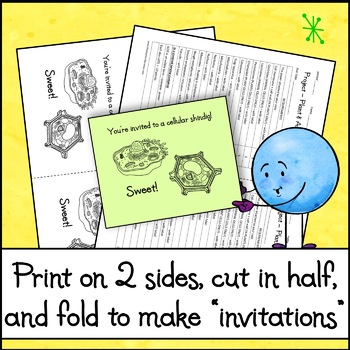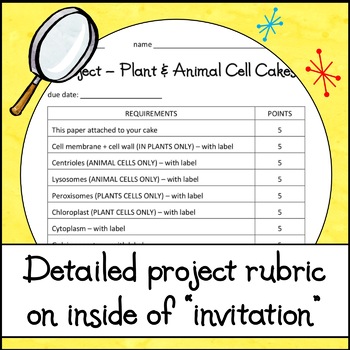Animal & Plant Edible Cell Cake Model Project - Rubric + Powerpoint Instructions
- Zip
What educators are saying
Also included in
- In this growing bundle of lessons on cells, students will learn the structures and functions of plant and animal cells. This bundle will also prepare 7th grade science and biology students on the topics of prokaryotes, eukaryotes, organelles, microscope use, active and passive transport, osmosis, cePrice $28.00Original Price $40.00Save $12.00
- This growing bundle of lessons for 9th and 10th grade biology includes the metric system, biochemistry, cells, photosynthesis, respiration, cell division, heredity, and classical genetics. Bundles include notes, worksheets, lab activities, card sorts, task cards, digital Boom cards, review sheets,Price $191.00Original Price $317.00Save $126.00
Description
This project about plant and animal cells will prepare your 7th grade science and biology students to create a model of a cell in detail including organelles, nucleus, and cell membrane. The assignment comes in the form of an invitation with a detailed grading rubric listing all project requirements.
Important Information
- Detailed instructions for your students in a Powerpoint presentation
- Recommended for 7th grade middle school science and high school biology
- Thank you to the following artist for the wonderful clipart. Just click on their shop name to go directly to their store: Lovely Jubblies Teach
TEKS Covered
7.3B, 7.12C, 7.12D, 7.12E, 7.12E
B.4C
NGSS Standards Covered
MS-LS1-2
HS-LS1-2
Materials Needed
Each student will make a cake. Materials will vary.
Also found in this money saving bundle
Related Resources
- Lab Activity – Why Are Cells So Small?
- Lab Activity – Osmosis in an Egg
- Card Sort Activity – Cell Structures and Functions
Terms of Use – copyright ©Catherine Skye All rights to this product are reserved by author. This authorizes one teacher to use this product. If you want to share it with other teachers, please purchase a license to share this work. Copying by more than one teacher, classroom, department, school, or school system is prohibited UNLESS you purchase a license. Clipart and elements found in this PDF and others on my site are from the public domain unless otherwise noted. All products on my site are intended for classroom and personal use and may not be digitally copied for reuse in any form. Any misuse is considered copyright infringement and violates the DMCA (Digital Millennium Copyright Act).







